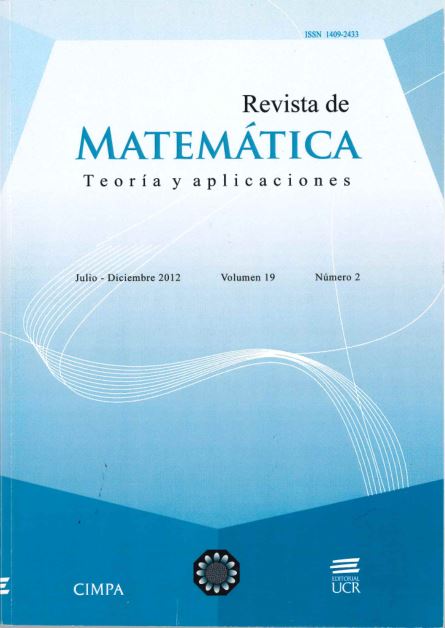Abstract
The design of compact zones has been studied because of its influence in the creation of zones with regular forms, which are easier to analyze, to investigate or to administer. This paper propose a new method to measure compactness,by means of the transformation of the original geographical spaces, into figures formed with square cells, which are used to measure the similarity between the original zone and an ideal zone with straight forms. The proposed method was applied to design electoral zones, which must satisfy constraints of compactness, contiguity and population balance, in a topographical configuration that favors the creation of twisted and diffuse shapes. The results show that the new method favors the creation of zones with straight forms, without an important effect to the population balance, which are considered zones of high quality.
References
Altman, M. (1997) “Is automation the answer: the computational complexity of automated redistricting”, Rutgers Computer and Law Technology Journal, 23(1): 81–141.
Baçao, F.; Lobo, V.; Painho, M. (2005) “Applying genetic algorithms to zone design”, Soft Comput. 9: 341–348.
Bergey, P.; Ragsdale, C.; Hoskote M. (2003) “A decision support system for the electrical power districting problem”, Decision Support Systems 36: 1-17.
Chou, C.; Li, S.P. (2007) “Spin systems and political districting problem”, Journal of Magnetism and Magnetic Materials 310: 2889–2891.
Gilbert, K.C.; Holmes, D.D.; Rosenthal, R.E. (1985) “A multiobjective discrete optimization model for land allocation”, Management Science 31(12): 1509–1522.
Gutiérrez-Andrade, M.A.; Rincón-Garćıa, E.A. (2009) “Redistriccting by square cells”, Lectures Notes in Artificial Intelligence 5845, Springer, New York: 669–679.
Kirkpatrick, S.; Gellat, C.D.; Vecchi, M.P. (1983) “Optimization by simulated annealing”, Science 220: 671–680.
Metropolis, N.; Rosenbluth, A.W.; Rosenbluth, M.N.; Teller, A.H.; Teller, E. (1953) “Equation of state calculation by fast computing machines”, Journal of Chemistry Physics 21: 1087–1091.
Muyldermans, L.; Cattrysse, D.; Van Oudheusden, D.; Lotan, T. (2002) “Districting for salt spreading operations”, European Journal of Operational Research 139: 521–532.
Ricca, F.; Simeone, B. (2008) “Local search algorithms for political districting”, European Journal of Operational Research 189: 1409–1426.
Rı́os-Mercado, R.Z.; Fernández, E. (2009) “A reactive GRASP for comercial territory design problem with multiple balancing requirements”, Computers & Operations Research 36: 755–776.
Williams, J.C. (2003) “Convex land acquisition with zero-one programming”, Environment and Planning B: Planning and Design 30: 255–270.
##plugins.facebook.comentarios##

This work is licensed under a Creative Commons Attribution-NonCommercial-ShareAlike 4.0 International License.
Copyright (c) 2012 Revista de Matemática: Teoría y Aplicaciones





